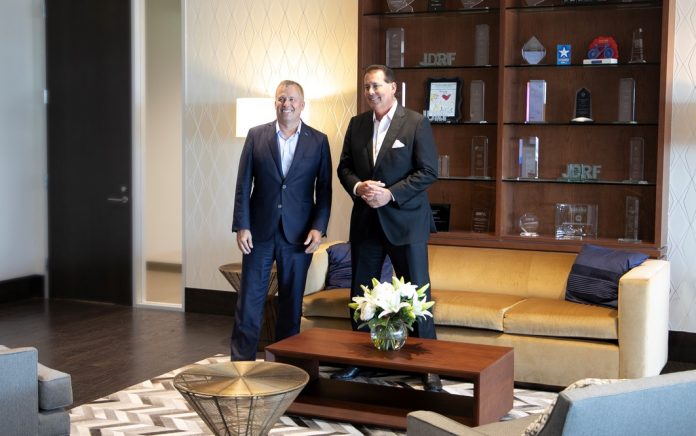A scant two months after announcing their intention to do so, Aimbridge Hospitality and Interstate Hotels & Resorts completed their planned merger. Describing for LODGING the how’s and why’s behind the Aimbridge-Interstate merger and what’s ahead for the newly combined company were Aimbridge founder and former CEO Dave Johnson—who now is the CEO of the combined business—and Mike Deitemeyer, former president and CEO of Interstate, who is now global president of the company.
What was the genesis of the Aimbridge-Interstate merger decision?
Dave Johnson (DJ): Our pre-existing relationship made it easier for us to first informally discuss whether the opportunity would make sense before proceeding. What we wanted to consider were how the organizations would fit together and the benefits they would offer. Every decision we make is driven around what’s in it for our owners, the people that we actually manage hotels for, so we wanted to be sure the Aimbridge-Interstate merger would drive better margins, better talent, better procurement, better technology—basically, would one plus one equal three? Given the amazing things Mike has done at Interstate in the last three years, we felt it would equal four because the scale we could create really differentiates our business from our competitors to deliver better results to our owners.
How is the integration going so far?
DJ: It’s going well. Our owners on both sides made it clear that they wanted their respective teams to remain in place to operate their hotels and didn’t want them to be involved with integration, so we’ve got an entirely independent integration team, including outside consultants. We on the senior team have taken a collaborative approach—putting our egos in check—and are focusing on taking the best of each side to create an even stronger, more dynamic company.
Mike Deitemeyer (MD): Communication is especially important as we step away from the two separate entities. If you looked at some of our new collateral and some of our internal communications, you’ll see the DNA of both companies coming together into one language and communication style. As Dave said, we’re really trying to accentuate and reinforce the best of both worlds. We want to understand what it’s going to take to leverage our talent throughout the company to become best in class in all the different product types that we manage.
What are some of the specifics each company brings to the whole?
DJ: On our side, because we have roughly 1,000 property sales people across our hotels, we can use something called Boomerang to leverage these boots on the ground relationships for cross-selling—for example, referring from a limited-service Courtyard to a full-service Marriott—to drive incremental revenue. We had that ready to roll, and I think implemented across Interstate’s system within the first week that we came together. On Mike’s side were the advantages of their teams’ more advanced procurement systems, which offer better margins, better costs structures for our owners, which we’ve also already implemented in the interest of our owners.
MD: To that, I would add that Aimbridge has an aggressive capital markets and business development strategy that has a lot of tools that we didn’t have on the Interstate side. But, overall, what we’re doing is going department by department and really being thoughtful through our team and the outside consultants Dave mentioned for independent validation of what’s best in class and determine where we want to be eventually.
What is the impact of scale, including how it impacts the roles of management companies and brands?
DJ: Having a larger company is a big advantage in terms of attracting talent. It’s hard for a small company to attract top talent because employees can’t matriculate their careers when there’s not a lot of opportunity for them. I can point to numerous examples of talented individuals now in their fifth or sixth job with us over a period of 10 to 15 years. Our owners understand that, too, because having the ability to attract and retain top talent really drives performance at the asset level.
As for the Aimbridge-Interstate merger’s impact on the roles of management companies and brands, from our perspective, the relationship between the brands and operating companies is complementary. Brands are focused on driving more value to their customers, the guests, and we at the management companies are focused on the customer on the asset level, the owner, because at the end of the day, we are operating the hotel.
MD: As the largest third-party manager now, we leverage that for what I call the “back-of-the-house stuff”—accounting, human resources, procurement efficiencies, technology efficiencies. It’s how we bring all that expertise to provide real value for the people whose hotels we manage.
One of the most important ways scale matters is in the use of data and the business analytics to regionally assist our hotels and our operators for success. How we leverage that data to optimize performance is another tool that will distinguish us as we go forward.











